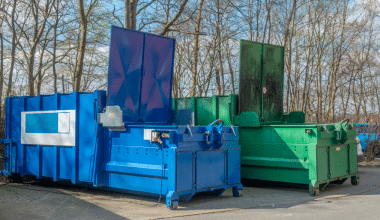In 2015 the agenda for Sustainable Development was set by the United Nations (UN) with 17 Sustainable Development Goals (SDGs) for socio-economic development to be met by 2030. The SDGs had huge implications for the construction industry, which is responsible for around 40% of UK waste and comes with a high carbon footprint.
193 countries agreed to the SDGs and adopted them at COP21. However, it is now 2023. We are over halfway through the timeline set back in 2015, and the take up has not been fast enough to meet the SDGs by 2030. Only two-fifths of businesses have set corporate goals ambitious enough to meet the SDGs. At the current pace, we won’t meet them in the next seven years.
Construction plays a major part in the UK’s carbon footprint, and sustainable measures must be embraced across the board to ensure the SDGs are met.
What are the Sustainable Development Goals (SDGs)?
The 17 SDGs were all aimed at ending poverty and creating a more prosperous future for the world by 2030. They are also called Global Goals and are aimed at creating a better planet.
The goals aim for a world where people aren’t hungry, living in deprivation, and can access good education, and healthcare. The goals also include access to clean water and sanitation, using clean energy sources, and creating sustainable cities and communities with responsible consumption.
With regard to sustainable construction, the SDGs that are most relevant to companies are as follows:
- 6: clean water and sanitation
- 7: affordable and clean energy
- 9: industry, innovation, and infrastructure
- 11: sustainable cities and communities
- 12: responsible consumption and production
- 13: climate action
What Should The Construction Industry Be Doing?
There are plenty of measures to be taken in the construction industry to reduce the sector’s carbon footprint and start making construction sites more sustainable. Commercial construction companies should examine their own goals and weave sustainability into their projects to lower the damage to the environment construction causes.
Here are some ways organizations can be more sustainable.
Renewable Energy Sources
Construction sites consume high amounts of energy with the constant use of heavy machinery. However, eco-conscious companies could take measures to ensure they use renewable energy sources like solar panels on site to reduce their environmental impact. It doesn’t end at the construction sites, the entire supply chain can work together to ensure there are fewer shipping times when transporting materials to sites.
Reduce Energy Consumption
Construction management teams are responsible for setting up lighting systems, air-conditioning and ventilation across the building sites they operate in. By using renewable energy sources and energy-efficient materials they can improve the overall energy efficiency of a building. There are a variety of energy conservation techniques that can be applied across the construction industry to help reduce consumption and make buildings more eco-friendly.
Recycled Materials
A primary phrase in sustainability is ‘reduce, reuse, recycle’. First, people should attempt to reduce their usage, and if not possible then reuse what they have, before recycling things. Many reputable sustainable construction companies have sought to use recycled materials in their work, whether it’s reclaimed timber or furniture made from recycled materials.
Going Carbon Neutral
Another way companies can lessen the damage done to the environment with construction is to work in partnership with climate-conscious companies to help offset their carbon footprint. Construction is always going to cause harm to the environment. It is unavoidable. But working in partnership with climate projects like forestry regrowth can help lessen the negative impact construction has to the environment.
Conclusion
The construction industry is directly responsible for vast amounts of waste in the UK, and sustainable methods need to be adopted across the board to ensure the UN’s ambitious SDGs are met. Currently, we are not on track to achieving these goals previously outlined in 2015.
However, there are several ways any construction company can reduce their impact on the environment. Simple steps can be taken, but it needs to go further than this. Companies need to work on a sustainable action plan to identify and assess the carbon footprint of their full project lifecycle, including their supply chain. Many reputable eco-conscious construction companies are doing this already.
Adopting methods like waste reduction, renewable energy sources, using recycled materials, and assessing the carbon footprint of projects companies can work to drastically lower the industries carbon footprint, and help beat the UN’s Sustainable Development Goals.
Related Articles
- The Perks of Deploying Sustainable Energy for Industry
- Construction Project Management: Beginner’s Guide to Efficient Management
- How Your Business Can Practice Sustainable Manufacturing
- GREEN ENERGY COMPANIES: 15 Best Green Energy Companies To Invest in The UK
- CONSTRUCTION BUSINESS: Detailed Startup Guide






